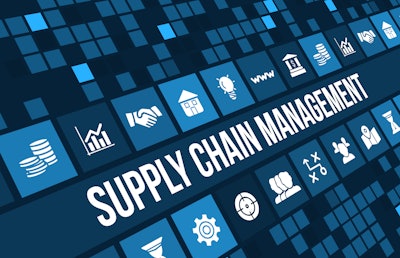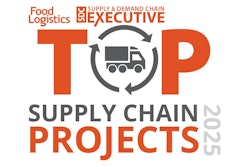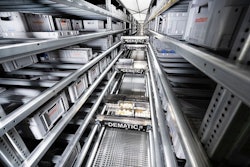
Five years out from the COVID-19 pandemic and one might think that supply chain managers have it easier now. But, the current era is far from stable or secure. While disruptions are not new, it seems we are now living in an era of permacrisis—where the next shock event is just around the corner.
Vinturas spoke to over 200 supply chain leaders about the impact of this permacrisis on shipments, and the results revealed that around 15% of shipments saw some kind of delay due to a supply chain issue in 2024 and a further 15% were lost.
While sometimes this is unavoidable, all these losses and delays risk becoming the biggest elephant in the room for supply chain managers, impacting the reputations and bottom lines of businesses across the United States. And the situation is only likely to get worse in 2025 with tariffs, trade wars and geopolitical tensions all on the rise, meaning that resilience has become a critical priority for supply chain managers.
Therefore, it’s unsurprising that independent polling data indicates U.S. business leaders plan to increase investment in supply chain technology by 7.5% over the next year. But where this money goes matters. Addressing persistent challenges requires a fresh approach to supply chain management. Gone are the days when visibility alone could tackle modern supply chain complexities; new solutions are required to today’s persistent supply chain problems.
A trade ecosystem rocked by disruption
To understand why a fresh approach is required to modern supply chain strategies, it’s best to first diagnose the key issues. Among disruption hotspots, the Panama Canal stood out as the most frequently cited source of delays by U.S. business leaders. This is unsurprising, given its role as a vital trade artery connecting the Pacific and Atlantic Oceans and its ongoing drought challenges. And disruptions might only increase as the canal becomes a focal point of geopolitical tensions.
Meanwhile, over one-third (37%) of U.S. business leaders pointed to the Suez Canal as another major area of concern, underscoring how global conflicts can ripple across supply chains and impact U.S. companies.
While external shocks are inherently unpredictable, internal inefficiencies also contribute to the challenges. Vinturas’ survey of U.S. business leaders revealed significant concerns about their ability to leverage data for logistics decision-making. Many also flagged poor integrations between supply chain partners—suppliers, logistics operators, and warehouses often operate as isolated entities rather than parts of a cohesive, free-flowing chain.
Perhaps most strikingly, the survey found that over one-fifth (23%) of U.S. companies still rely on paper-based systems (e.g., manual logs and forms) for supply chain management. This reliance on outdated methods raises questions: Is it a failure to digitize, a symptom of deeper operational issues, or merely a relic of the past?
What do surface-level solutions look like?
To address these issues, supply chain managers must differentiate between temporary fixes and long-term solutions that promote resilience.
Take visibility platforms, for example. These systems have become a cornerstone of supply chain management, promising near-real-time information for original equipment manufacturers (OEMs) and logistics service providers (LSPs). They offer a "dot on the map," showing shipment locations using web scraping, maritime, and airplane tracking. While this information can be helpful, particularly in responding to logistical shocks, it has significant limitations.
The main drawback is their lack of functionality for exception management—rerouting, expediting, or switching to alternative transport modes. In the face of disruptions, visibility platforms often leave managers reliant on traditional communication methods (phone, email, or even fax) and manual analysis tools.
Given this context, it is less surprising that many supply chain managers continue to depend on paper-based and other basic systems. This highlights a broader issue: investing in technology to gather data is one thing; using that data effectively to drive insights and actionable decisions is another.
What does a higher-level response look like?
This brings us to interoperability. At its core, interoperability refers to "the ability of different computerized systems or products to connect and exchange information seamlessly." In supply chain management, achieving this across an end-to-end network requires ports, warehouses, and LSPs to share timely and accurate data.
However, barriers to interoperability persist. For instance, all stakeholders must have IT systems capable of alignment, but in a global supply chain, not all parties possess advanced systems or electronic communication capabilities. Even when such systems exist, trading partners may fail to fully utilize them, creating gaps in connectivity.
Overcoming these barriers is essential to achieving resilience in today’s volatile environment. By investing in technology that connects stakeholders and consolidates their data, supply chain managers can move beyond mere data visualization. Interoperability enables real-time information sharing, allowing for immediate responses to disruptions. In a world of permacrisis, this capability minimizes disruption impact and ensures businesses can focus on what truly matters: delivering for their customers.
Only supply chains built on interoperability can achieve this level of resilience.


















